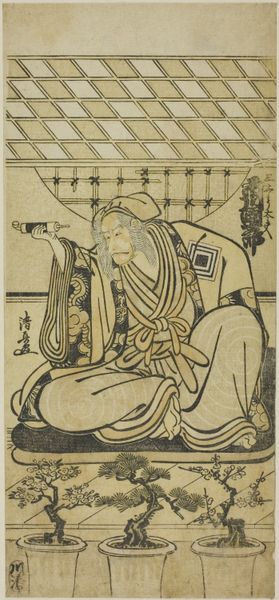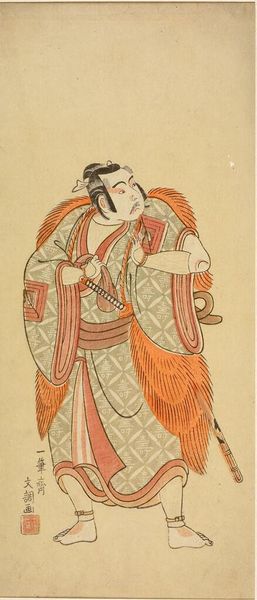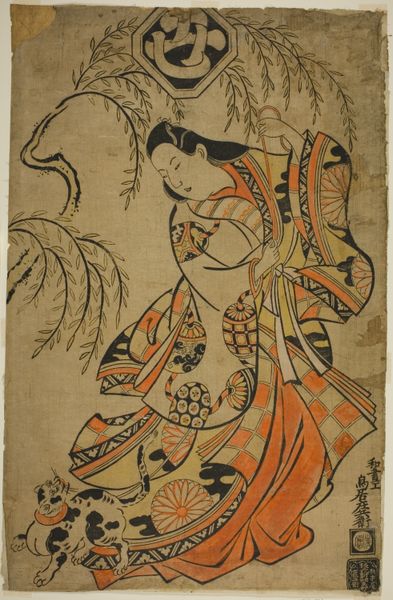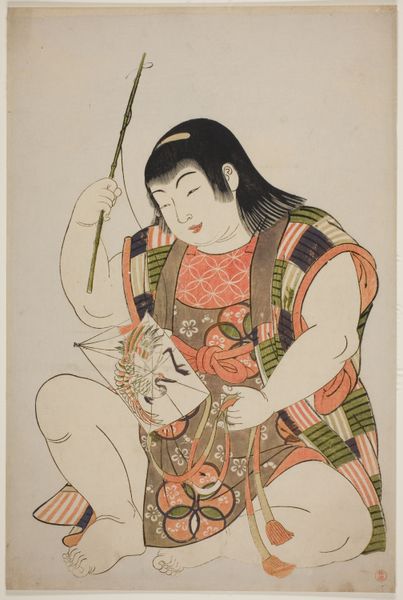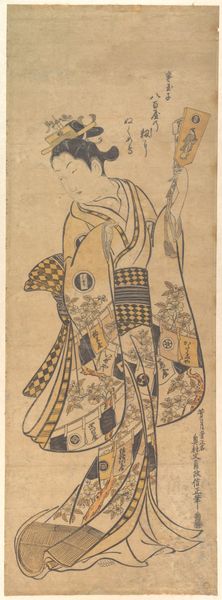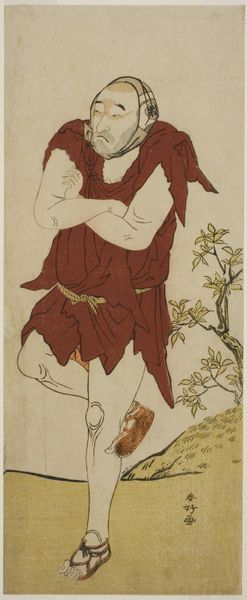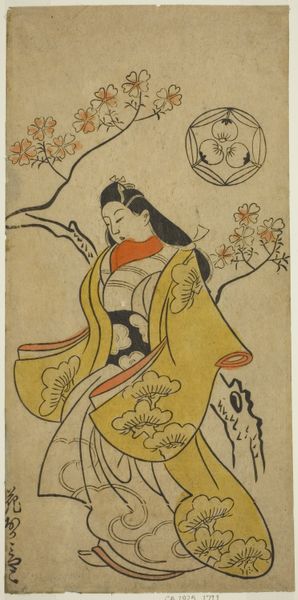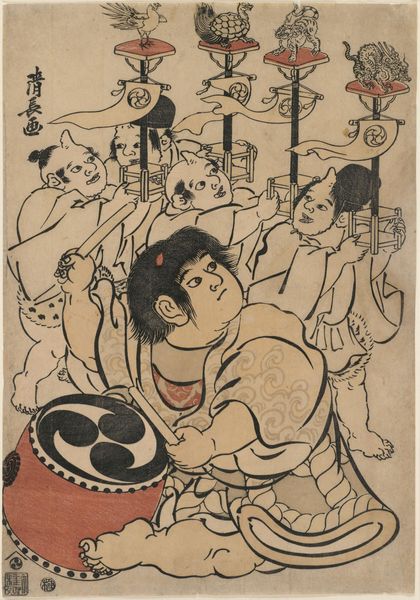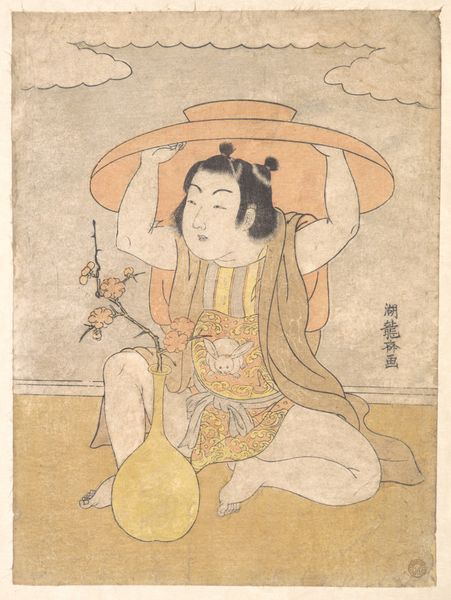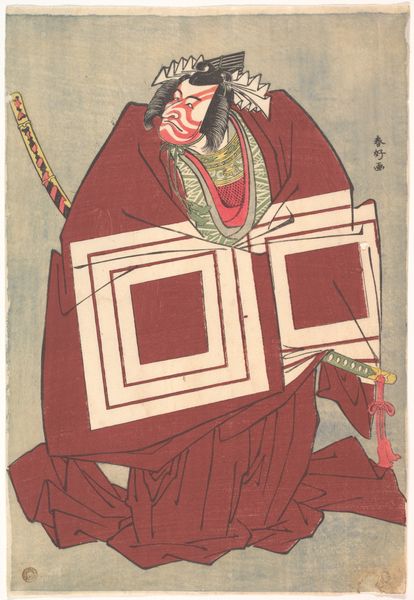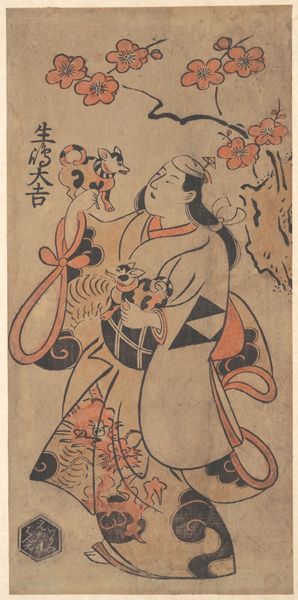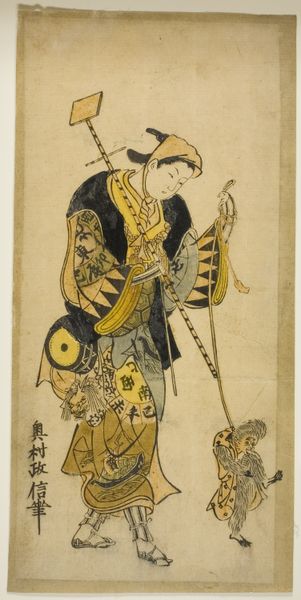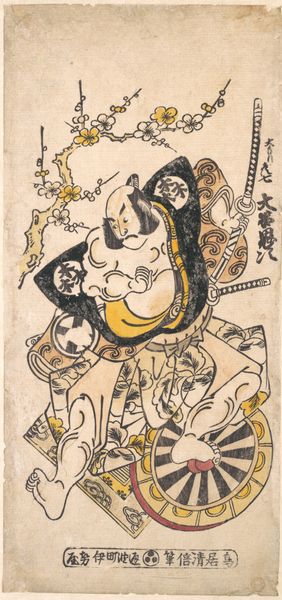
drawing, watercolor
#
portrait
#
drawing
#
narrative-art
#
asian-art
#
caricature
#
figuration
#
watercolor
#
flat colour
#
watercolour illustration
#
miniature
Dimensions: 17 11/16 x 11 3/16 in. (44.9 x 28.4 cm)
Copyright: Public Domain
Editor: This watercolor drawing, titled "Shiva," is dated around the 19th century and is currently held at the Minneapolis Institute of Art. The detail is incredible, especially given the size. I’m curious about its message. How do you interpret this work, especially given its materials and creation? Curator: Considering the material aspects and its place in production, I see the piece as reflecting the economics and societal consumption of religious imagery in 19th-century India. The use of watercolor, a relatively accessible medium, suggests it might have been created for a wider, possibly middle-class, audience rather than solely for elite patrons or temple settings. Editor: So, you're thinking it wasn't necessarily made for religious elites? Curator: Precisely. Think about the accessibility of watercolor compared to, say, stone sculpture or mural painting. The ease with which this could be reproduced and distributed alters our understanding of the function of this particular depiction of Shiva. This challenges the art historical boundary of devotional art. The relatively simple, though skilled, application of color and form, moves away from highly detailed depictions and instead suggests the artwork could serve as a souvenir for those of lower economic standing who could not afford higher class artistic creations. How do you view the multiple arms in this light? Editor: That makes sense. Looking at it now, the somewhat standardized depiction, perhaps enabled by watercolor, does seem geared towards wider dissemination. So, are you suggesting it's less about individual artistic expression and more about the socio-economic function? Curator: Exactly! It underscores how art creation and its consumption were intimately connected to societal structure. Editor: That's a fascinating way to think about it, focusing on the artwork's role as a product of its time rather than solely a devotional piece. Curator: It reminds us that art is not just divine inspiration; it is shaped by materials, labor, and consumer culture. I think it would be worth doing more analysis regarding its function, class connotations, and place of artistic origin in future analysis. Editor: This was so helpful for thinking about this image in its original cultural context!
Comments
No comments
Be the first to comment and join the conversation on the ultimate creative platform.
